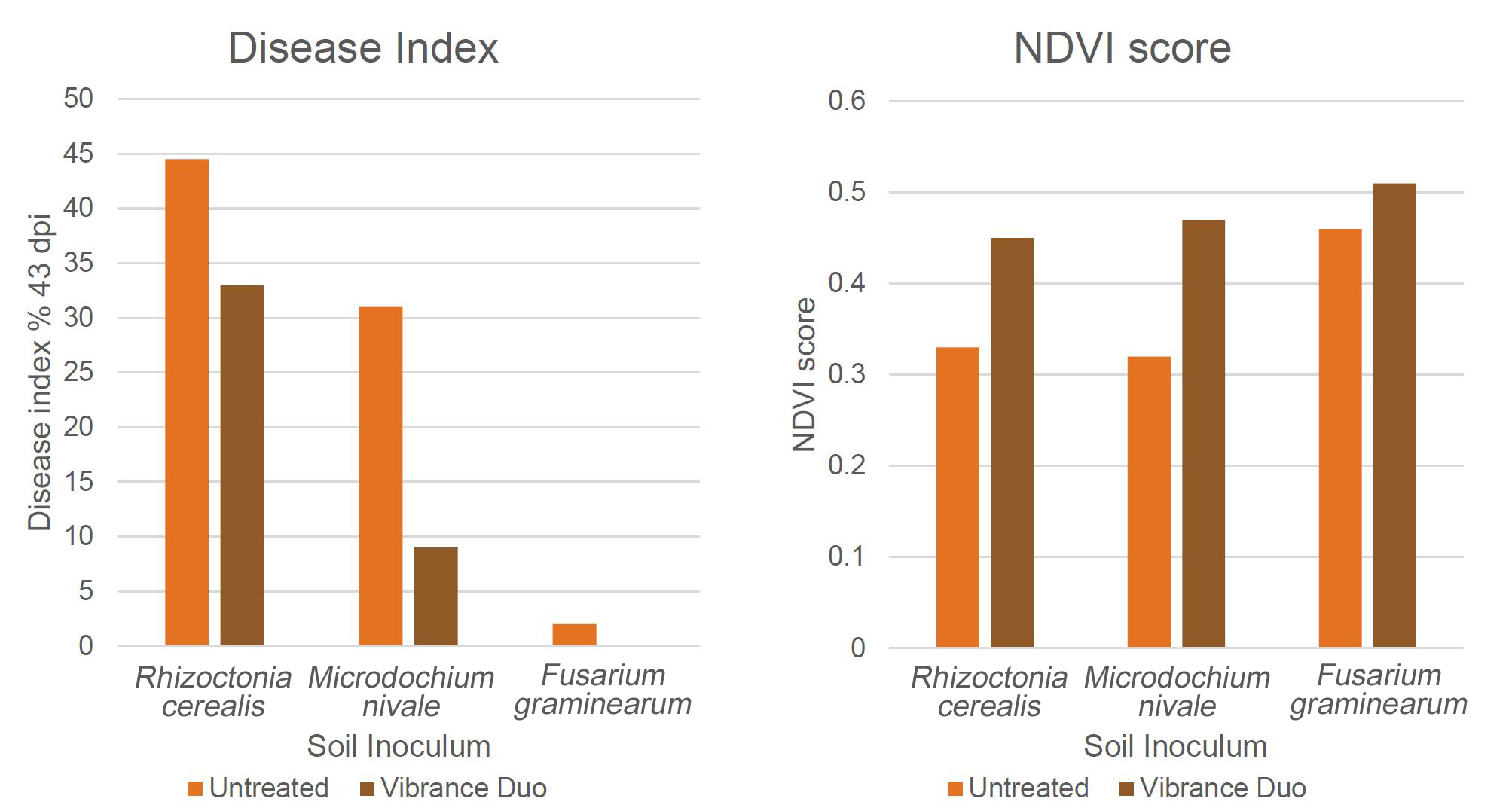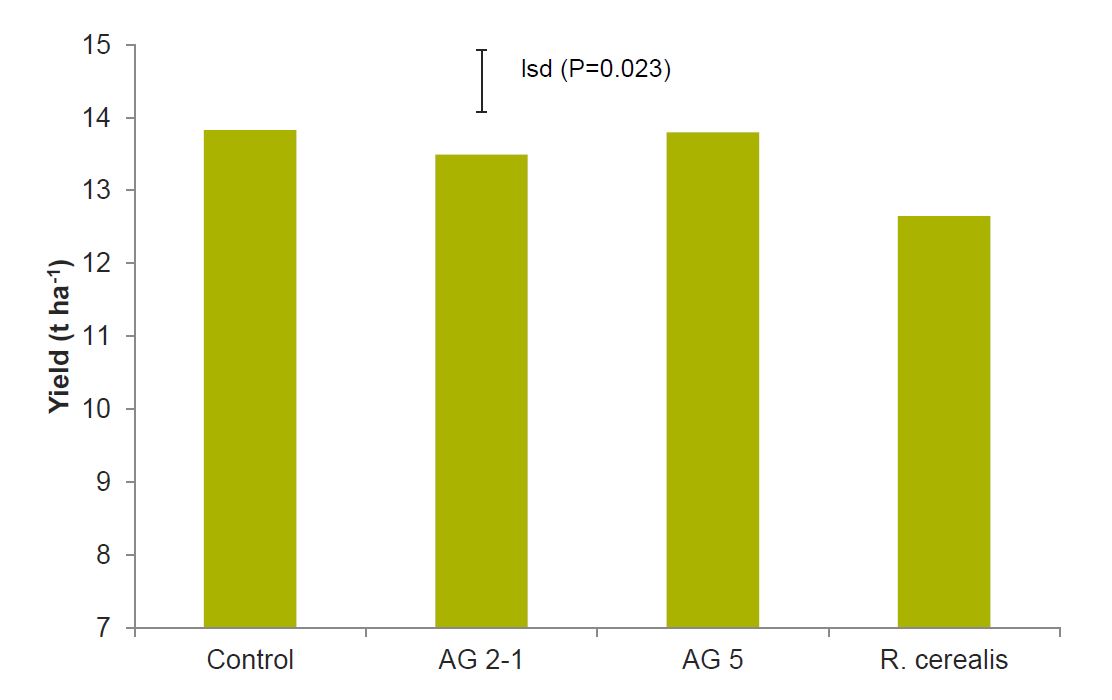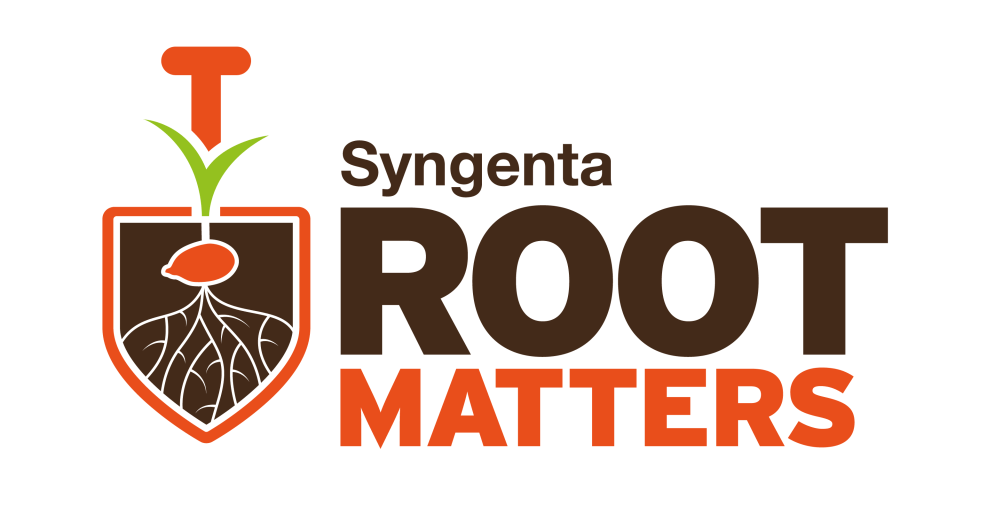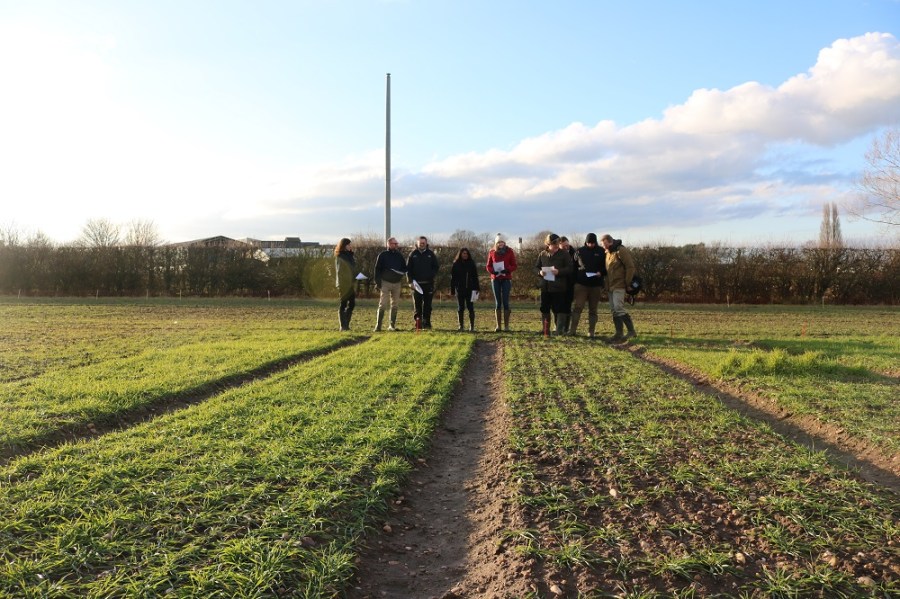Recent research has uncovered startling truths about a hitherto overlooked pathogen that may be feasting on the roots of UK crops. CPM joins a group of growers to discuss the findings with research scientists.
These diseases cause more problems to cereal roots than perhaps people realise.
By Tom Allen-Stevens
Looking across one of the untreated plots at the University of Nottingham’s Sutton Bonington trials, it’s crystal clear there’s something that’s taken its toll on the young wheat plants.
“It’s not too different from the problems we sometimes see, which are worst in wheat after oilseed rape,” notes East Lothian grower Chris Leslie. “Could it be that the OSR builds up a high population of soil-borne disease?”
Leics grower Phil Jarvis is conscious of the interaction that takes place beneath the soil surface. “You’re always aiming to get those small incremental increases in performance that add up. The trick is to identify the important aspects in that soup of soil management.”
The effect of soil pathogens and seed treatment

Source: University of Nottingham, Sutton Bonington, 2017
The trial plots in front of them have been inoculated with different soil-borne pathogens. It’s the second year of trials, funded by Syngenta, looking at the impact on emerging wheat seedlings of three major soil pathogens – Microdochium nivale, Fusarium graminearum and Rhizoctonia cerealis. On test is Vibrance Duo (fludioxonil+ sedaxane), the company’s SDHI-based seed treatment.
“Microdochium seedling blight and rhizoctonia root rot are the two soil-borne pathogens of cereals that have the most noticeable effect on establishment and there’s a definite uplift from the treatment in both cases,” reports Syngenta’s Michael Tait (see chart below). “Last year’s trials showed this carried on through to yield. These diseases cause more problems to cereal roots than perhaps people realise.”
The growers who’ve gathered at the Notts site are among a core group who established trials on their own farms last autumn in a bid to unearth some of the secrets of how roots develop. It’s part of Root Matters, an initiative from CPM and Syngenta, that aims to bring to the surface expert advice and relevant research that’ll help improve crop growth, and explore how this is put into practice.

Source: Brown (2016), Elucidating crop losses and control of Rhizoctonia solani and Rhizoctonia cerealis in winter wheat. PhD thesis, University of Nottingham.
Joining the growers is Dr Rumiana Ray of Sutton Bonington’s School of Biosciences. “Maintaining a healthy soil that allows roots to thrive is absolutely achievable. But it’s important to be aware of key pathogens, and if there’s an issue with establishment, to get to the root of the problem,” she says.
Previously, Syngenta-funded PhD research (Brown, 2016) has furthered understanding of two pathogens in particular: Rhizoctonia solani and R. cerealis. “There’s a number of different anastomosis groups (AG) of R. solani commonly found in UK soils and the mix of those present depends on crop type and rotation. AG2-1 is mostly associated with oilseed rape and is found in highest concentrations in wheat following OSR. It causes damping-off and root rots,” she explains.
“R. cerealis causes sharp eyespot, one of the stem-base disease complex that includes true eyespot and brown foot rot, the latter being principally caused by M. nivale. These diseases lead to whiteheads and lodging in wheat later on, bringing yield losses of up to 30%.”
Just how prevalent Rhizoctonia spp. are in UK soils wasn’t really known until a recent survey of over 90 English winter wheat crops was carried out. “This revealed 63% of fields contained R. solani AG2-1, with 76% of fields in the North. R. cerealis incidence was 54% – highest in the West, while just 22% of southern wheat fields were infected.”
Artificially inoculated field experiments over two seasons sought to measure the effect these pathogens are having on UK wheat crops. The replicated trials were also treated with Vibrance Duo or straight fludioxonil and compared with untreated. “In the first year there was a big difference in emergence, with a 50% response to the seed treatments. In the second season, only the sedaxane treatment showed a significant response against R. cerealis, increasing emergence by over 23%.”
The most severe stem browning is associated with R. cerealis, and it was this pathogen that was found to reduce wheat grain yield by 8.5%. “AG2-1, although prevalent, did not reduce winter wheat yield as much, while AG5 caused superficial infections. R. cerealis is the one to look for – we now know it causes losses both pre- and post-emergence.”
More detailed studies in the lab have used a high-resolution Nano CT system to investigate exactly what it is that soil pathogens do to roots. This uses x-rays to see through the soil as the roots grow and gauge the effect when soils are inoculated with Fusarium, Microdochium or Rhizoctonia spp. and when seed treatments are applied.
“The only pathogen with a significant effect on root diameter and root length was R. cerealis,” notes Rumiana. “This is likely via digestion of the root cortex. Vibrance Duo has the effect of increasing root diameter, irrespective of pathogen species infecting the plant.”
“So what increases the level of rhizoctonia in the field?” asks Hants grower David Miller.
“There’s a definite rotational effect – growing the host crop frequently selects for the pathogen and it can survive in soil for a long time,” says Rumiana. “So a five-year break from cereals may reduce levels of R. cerealis, but it can build back up again once the host crop returns.”
“This could be why our wheat after OSR seems to be affected,” suggests Chris.
If rhizoctonia is affecting the wheat crop, Rumiana stresses that it’s important to identify which species is prevalent. “Isolates of R. solani AG2-1 are pathogenic to both wheat and OSR but cause more damaging disease in OSR than in wheat,” she explains.
Phil wonders what contribution overall soil management has. “Do mycorrhizae interact with soil pathogens?” he asks.
“Mycorrhizal fungi are definitely beneficial as they may act antagonistically against root pathogens or occupy their space” she notes.
“It also depends on cultivations and overall soil health – although min-till systems may encourage pathogens to build up, good rotation and soil management will increase soil biodiversity. This has the effect of decreasing the likelihood of pathogenic species dominating and being more aggressive. But we’ve found sedaxane is quite specific and very effective against the major soil pathogens such as Microdochium or Rhizoctonia spp.,” Rumiana concludes.
ICAROS unearths R. solani secrets
Initial results from an industry-funded oilseed rape project suggest the crop could be suffering sizeable losses from Rhizoctonia solani. Varietal resistance and use of novel seed treatments could lift the crop off the yield plateau.
“R. solani is an overlooked pathogen and its effect on OSR has been ignored,” notes Rumiana Ray.
“The fields we surveyed previously for AG2-1 and R. cerealis were wheat fields. But the interesting part of this work was that when OSR was the previous crop, the level of AG2-1 in the soil was much greater – typically twice as high and up to four times as much as when wheat follows wheat. Clearly OSR selects for that group of isolates, so what are they doing to the crop?”
Root system architecture studies, using x-rays on OSR seed, have been conducted in soils inoculated with the pathogen. These revealed AG2-1 digests the root of the young seedling. “On day four, the root is growing but by day six, it’s gone,” she notes1
“That’s significant for OSR – a crop that relies on its taproot. Some of the establishment problems growers experience could be down to this soil-borne disease, rather than slugs or pests.”
This prompted a proposal for Agri-Tech funding into a major new study. The £620,000 ICAROS project lasts for three years and started in May 2016, led by Syngenta. Work packages, carried out principally by University of Nottingham, funded by BBSRC and AHDB, include epidemiology studies and identification of resistant traits as well as extensive field trials funded by Syngenta testing different varieties and novel seed treatments in inoculated soils.
“It is generally assumed that varietal resistance to R. solani AG2-1 in Brassica doesn’t exist, but no one had looked beyond a limited germplasm,” says Rumiana. “We’re looking at over 400 diverse genotypes, and are identifying distinct differences. We have found genetic markers that suggest tolerance could be bred into UK lines.”
Meanwhile field trials are delivering some staggering results for a novel seed treatment inclusive of sedaxane, metalaxyl and fludioxonil, reveals University of Nottingham’s Dr Dasuni Jayaweera. “In soil inoculated with AG2-1 which is comparable to what we have measured in naturally infected soils we’re seeing a yield response of about 3t/ha. We’ve found that the pathogen delays flowering and that the seed treatment negates this effect.”
Increasing the seed rate can partially compensate for yield loss under high disease pressure, although this isn’t as effective as seed treatment.
Much is still unknown about AG2-1, and in particular how it varies within and between fields and farms. Although varietal resistance is the most sustainable way forward, Michael Tait believes a seed treatment could be strategically used in high pressure situations to bring the population of AG2-1 down to a low level. “We now know a lot more about a pathogen that may be holding OSR on the yield plateau,” he notes.
1 Source: Sturrock CJ, Woodhall J, Brown M, Walker C, Mooney SJ and Ray RV (2015) Effects of damping-off caused by Rhizoctonia solani anastomosis group 2-1 on roots of wheat and oilseed rape quantified using X-ray Computed Tomography and real-time PCR. Front. Plant Sci. 6:461. doi: 10.3389/fpls.2015.00461
 Root Matters
Root Matters
Root Matters is an initiative from CPM and Syngenta that aims to unearth some of the secrets of how a crop develops beneath the soil surface.
Together with a core group of growers, we’re looking at how to conduct simple assessments of crop and soil health. We’re exploring the implications of agronomy decisions on root mass and plant stress management, and the interaction of this with variety choice. It combines ‘citizen science’ from the group, with practical field trials at Syngenta’s Innovation Centres, through to high level technical R&D.
The aim of this interactive initiative is to develop practical solutions and information to help farmers get more from their wheat crops. We hope to deliver a better knowledge and understanding of crop rooting systems, and work together to develop practical solutions to help farmers get more from their wheat crops.
For more, go to www.syngenta.co.uk/root-matters or follow progress on Twitter – #RootMatters.




